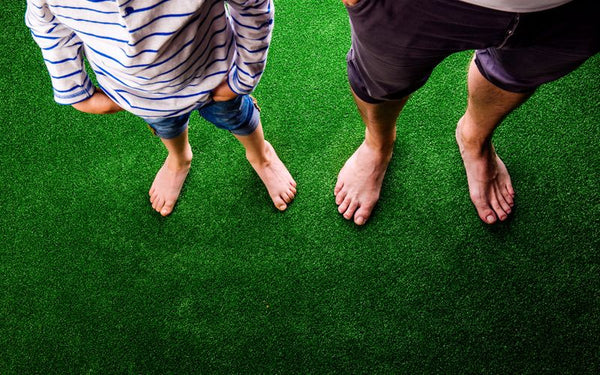Low-E windows and synthetic turf are two common materials that you can see in many homes. People use energy-efficient windows to cut energy costs. Meanwhile, most houses have an artificial lawn to avoid maintenance duties. But did you know that Low-E windows and this grass are like oil and water? Let’s find out why.
The Effects of Energy-Efficient Windows on Artificial Turf
Low-E windows may be an efficient energy-saving tool. However, it could cause damage to your synthetic turf. The glass used by these windows have reflective properties. Meaning, it bounces off the light to an object next to it (in this case, the lawn).
If the grass field gets the heat from the window glass, it will cause the temperature to rise. Consequently, the artificial grass will burn, or worse, melt.
How to Determine if the Turf Damage Is Caused by Low-E Windows
Unfortunately, knowing the cause of such damage is tricky, especially if your windows aren’t the only ones that have reflective properties. Nonetheless, you can still determine if the synthetic turf damage is caused by energy-efficient windows. You only need to do the following tips:
Tip #1: Check the Light Angle on Your Turf.
Go where the fake grass is installed. Place yourself on the spot where the damage is and see if can throw a shadow over that area.
Energy-efficient windows have multiple glass layers and can reflect light in different directions. A burnt area will show a light shadow far from where you stand. This is because a light refraction is shining through the surface, which causes this condition.
Tip #2: Check the Temperature of the Lawn.
Although synthetic turf is hotter than natural grass, the temperature will rise even more if Low-E windows cause the damage. Touch the surface of the lawn. If it’s scorching hot, it could be because of the reflective surface of the window glass.
How to Reduce the Effect of Energy-Efficient Windows on Your Turf
There are several things that you can do to minimize the damage. First, you need to wet the area. Do it every 30 minutes to keep the turf fresh. You can use a hose or a sprinkler system to water the entire lawn.
You may also need to change the infill if the shade is darker than the original. Dark-colored infills absorb more heat than lighter ones. Replace them with lighter shades to minimize heat absorption.
You can also apply screens to your windows. Not only will it help in making your home insect-free. It also blocks the harmful UV rays from touching the glass’ surface.
However, if you think this isn’t enough, you may add Turf Guard window films. This particular tint not only provides added protection and privacy to your home. It also protects your plastic grass from the harsh effects of your energy-efficient windows.
To purchase Turf Guard Window Film, go to windowfilmforturf.com










